The MROC came to me in the review package along with the XP8. I have really enjoyed the products I have evaluated from Atibal thus far. I feel Atibal, along with a few others, serve a middle ground of value to performance that the working man can afford. Not every Rifleman can afford a $900+ optic, hence why I like to T&E some of the more affordable things in life as well as the high-end cool stuff.
The MROC hits that middle ground price point, coming in at $326 at a popular optics retail site. It is a compact prismatic optic which attempts to compete with similar products from Burris, Vortex, Primary Arms, and other brands. In my opinion, it is quite unique. The astute will notice that several of the 4x prismatics on the market look very similar. Could it be that they are made in the same factory? (note the sarcasm!) Well, the MROC doesn’t have to work too hard to grab your attention. It looks different. It is different. It is not like the others.
Let’s have a closer look:
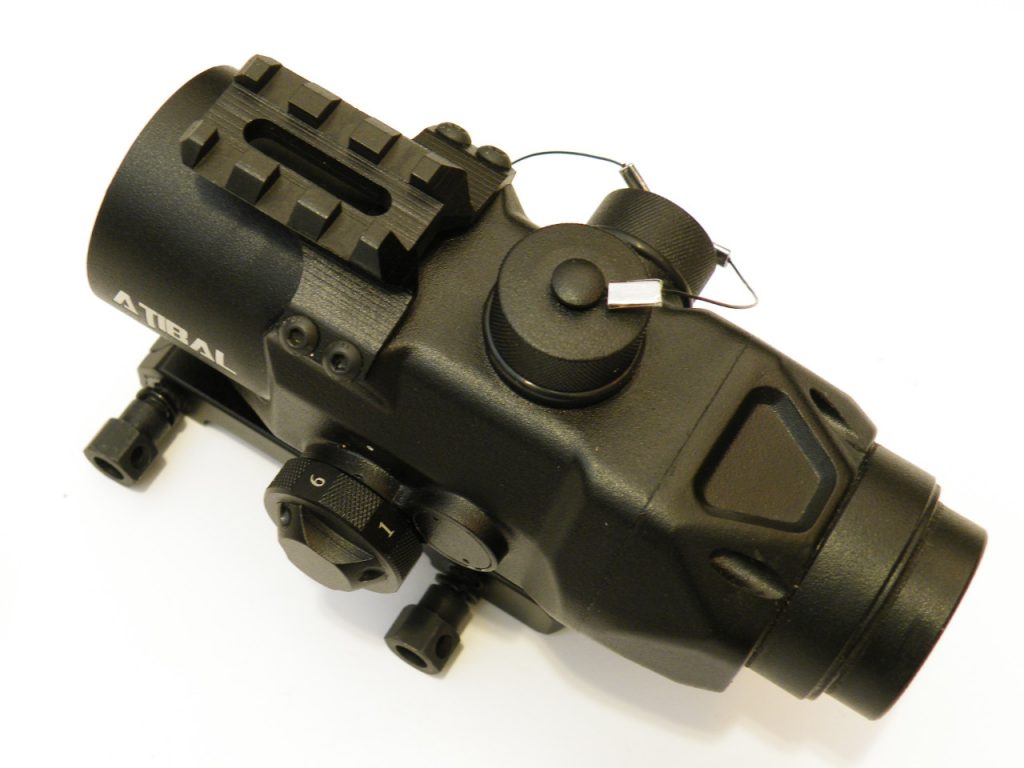
Fit and Finish:
The MROC is a 3×32 optic which weighs in at 14.4 oz. The optic is a prismatic optic housed in what I would call an aluminum chassis. The main components of the MROC are the rear objective, the main body which integrates with the picatinny mount, and the front objective tube which houses the 32mm lens.
It appears that the body is cast aluminum, with the assembly chopped into a 1/3 at the rear and reamed out to the correct dimensions to accept the optical assemblies and electronics package. It is robust, and the walls of the optic seem to be quite thick. On top of the optic is a small rail to accept a mini RDS.
The dials and battery housing are tethered together. Curiously, the choice of battery power for the illumination is a CR2 which I am not as familiar with compared to the CR123. I did manage to find a CR2 at the grocery store, so I guess they are out in the wild of your local supermarket battery section.
The fit and finish are good, with what appears to be a hard coat anodizing on all exposed surfaces.
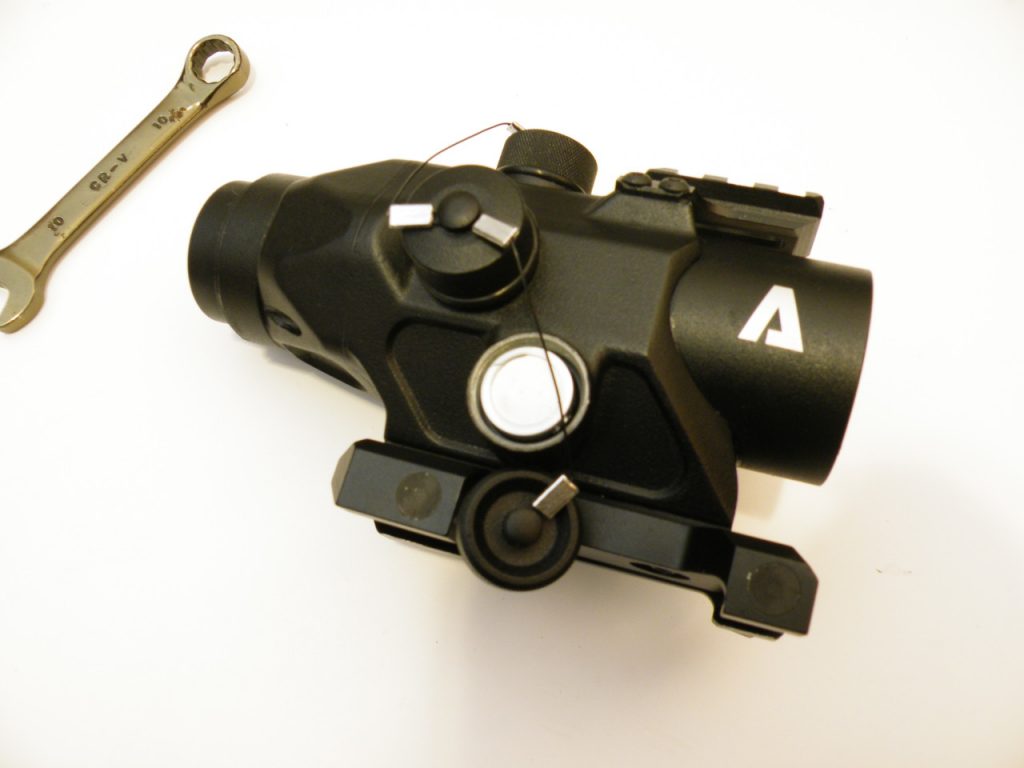
The CR2 battery was available at my local grocery store.
The Glass:
I noted the optics are bright and clear. There are no dust particles or specs in the glass, and overall glass quality is good and it would be well suited to comparison with its peer products. Part of the optical brightness is related to the huge 32mm objective. That objective gathers plenty of light and funnels it into a 10mm exit pupil. Finger click turrets are 1/2 windage and elevation. They are protected by a o-ring sealed caps and the caps are tethered together to prevent loss on the range. Parallax is set to 100 yards.
The FOV is massive, and is best in class among its peers. Thirty seven feet at 100 yards. This is greater than the 36.8 feet of the 4×32 ACOG, the 28.9 ft of the 3.5×35 ACOG, and 31.5 feet of the Primary Arms 3x prismatic.
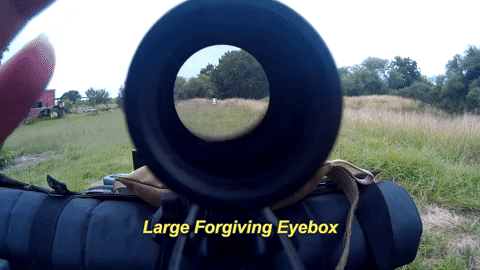
The stated eye relief hovers around 2.8 inches. In practice, I found the eye relief is more forgiving than the stated range. I can place my head point-blank or several inches back and still see a useful reticle and image. This is a larger eye-box than the 4×32 ACOG by far. A 10mm exit pupil and 2.8 inches of eye relief combine for a very large eyebox.
The reticle is a chevron with BDC similar to the Trijicon ACOG series. The chevron is small. It is my understanding that Atibal’s community helped choose the reticle, and I cannot place blame as a company wants to sell what the customer wants, but I found the chevron to be small and hard to quickly pick up in a busy environment. Luckily the optic includes illumination. The switch on the side of the optic allows you to pick from 6 illumination settings with a dead space between settings for powering down. My review sample is a early demo model, and the chevron was not cleanly lit so I did not photograph it for fear of giving the wrong impression. Atibal noted that all MROCs shipped out will have a clean, well illuminated Chevron. 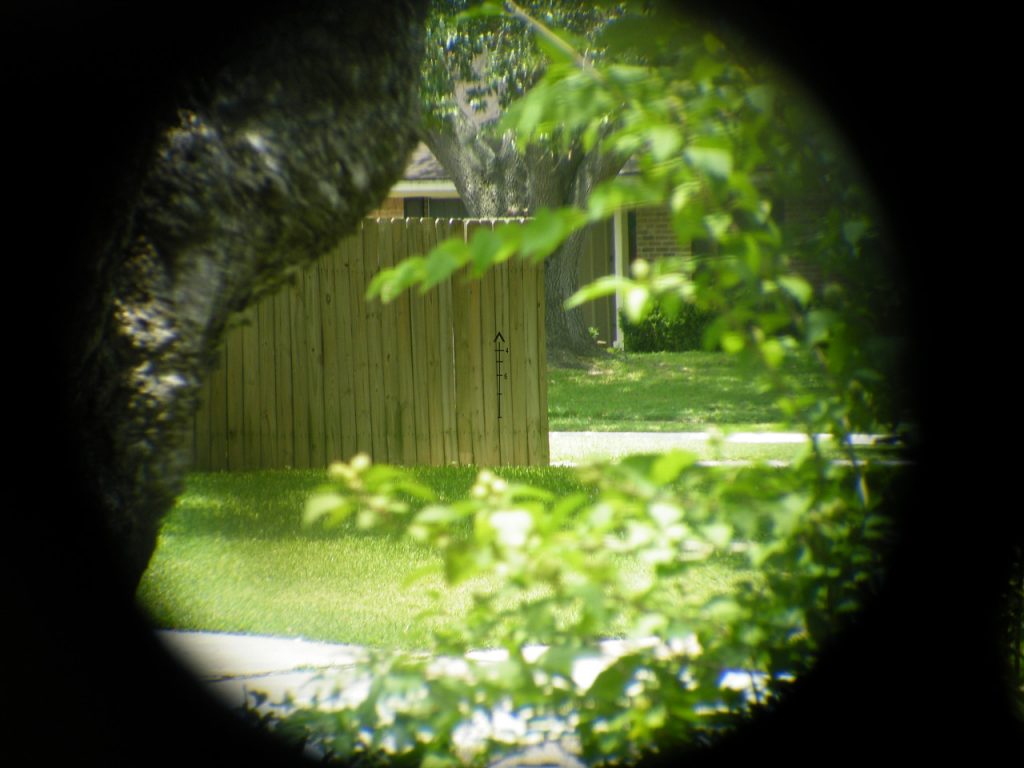
I would prefer a crosshair reticle in the future with a 5.56 BDC integrated, and will suggest that to the company. Whether or not it becomes of interest to the customer base remains to be seen. Crosshairs with thick side bars are easy to use in darker environments should the battery die.
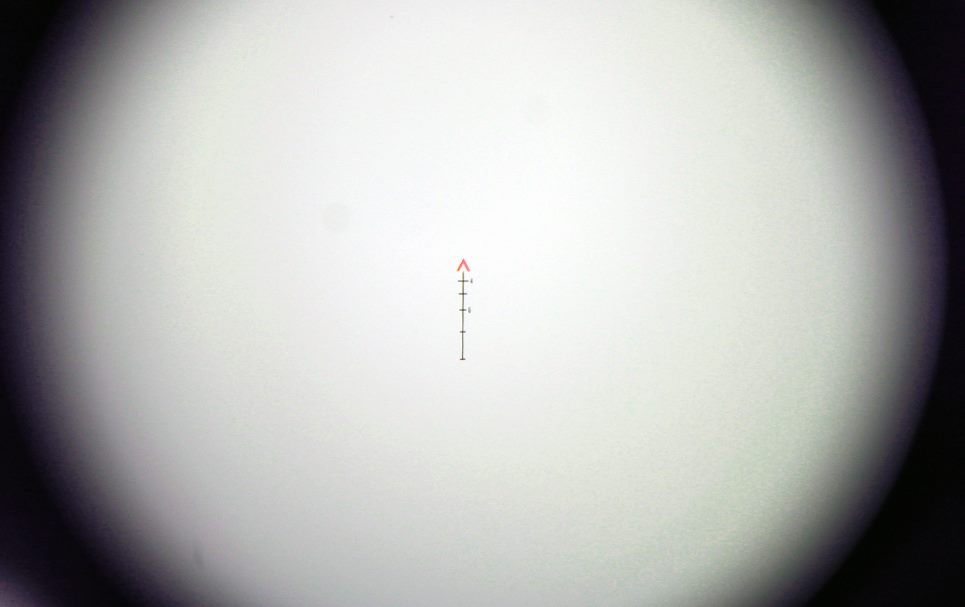
The MROC has an illuminated chevron reticle. Since I had a early demo model I asked the owner for a picture of the reticle as it should be seen under illumination.
In Use:
The Atibal MROC clamps on to the rifle securely through two bolts. They are not large enough to tighten securely by hand. I felt that more leverage was needed, so I utilized a wrench to tighten the assembly to the carbine. There are two holes to tighten the optic mount with a bullet tip, but the threaded bolt got in the way of the bullet tip making this feature difficult to use. Models imported later this year will be compatible with ACOG mounts and will be offered with a quick detach system. This will be a good change.
The windage and elevation are finger adjustable 1/2 minute clicks. I did not perform a box test as this optic style is set and forget similar to a Trijicon ACOG. Instead I concentrated on ensuring that light to moderate abuse did not displace the optical components and shift zero.
At the range I started by obtaining a 25 yard zero with the 400 meter mark. I moved to the 100 yard line to confirm zero. The optic was on paper at 100 so I started to fine tune the optic. I encountered curious behavior where my windage adjustments R moved the impact up and right. If you are unfamiliar with ACOG or prismatic style optics, the floating roof prism design must be allowed to settle into position after adjustment. Failure to do so will result in chasing a zero that is difficult to evaluate. I banged on the optic several times to settle the prism and continued to fine tune the zero at 100 yards. After the banging the optic, it tracked correctly to my adjustments. Once satisfied with my 100 yard zero, I proceeded to walk the gun back down range shooting and dropping and shooting and dropping. I dropped and tossed the optic from shoulder height and waist height on to hard soil, wood, and grass. I then returned to the 100 yard line to ensure the optic kept zero.
I shot the below five round group which happens to be sub-moa with the Atibal MROC post abuse. Chevrons have a fine tip for a surprising degree of precision. This group was shot with the Ballistic Advantage Hanson profile barrel and 69 grain Sierra Match Kings over 24 grains of Accurate 2230.
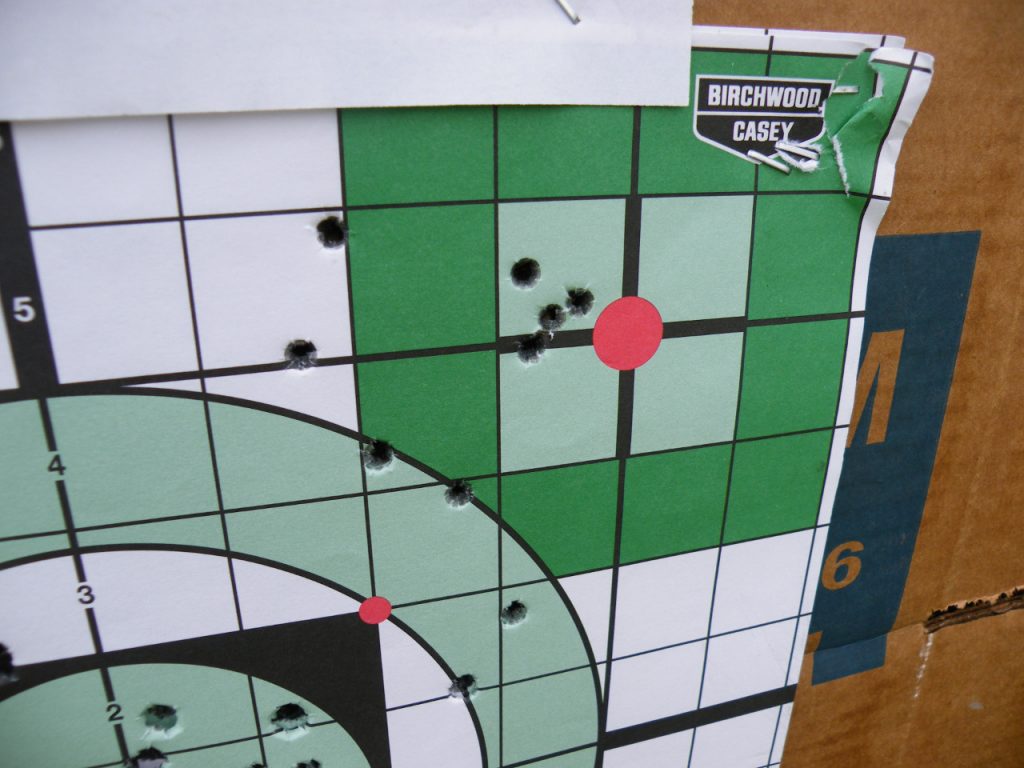
5 round group with the Chevron Equipped MROC. That’s actually a 5 shot group that measures less than a minute. I was satisfied that the MROC retained its zero after hitting the dirt.
The clear glass, forgiving eye-box, and huge field of view made using this optic a good experience. These characteristics blend some of the best stats of both the 4×32 and 3.5×35 ACOG and improves on prismatic performance. It blends a forgiving eye-box, a large field of view, and generous eye relief together far better than other compact optics I have used in the past to include ACOGs and Primary Arms 4x prismatic (now discontinued).
The small reticle should be changed in my opinion. Again, I recognize it is what customers want (they voted in favor of it on Atibal’s Facebook IIRC), but if the batteries are dead the reticle is small and easily lost in the noise during rapid transitions, and especially so in dark forested areas. I would strongly suggest future designs utilize a bold reticle design to catch the eye easier. I had the same complaints of the 4×32 Ta31F so consider it a general complaint of the this style of reticle.
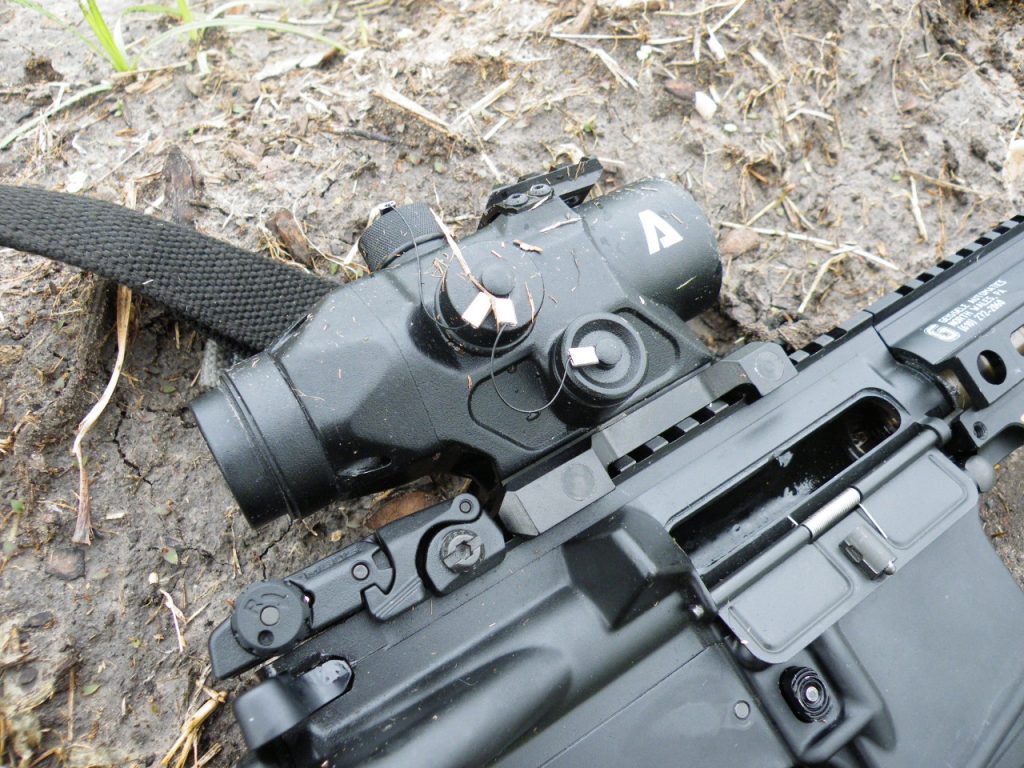
The only casualty of the testing was the forward rail. During the drop testing it bent downward which can be seen somewhat in this photo. It was removed as for my purposes it is unnecessary. If you are dead set on mounting a forward micro RDS on the small rail, a direct hit may skew your RDS zero. UPDATE: Atibal noted the models imported in the fall have already been re-inforced.
Wrapping Up
Atibal should keep up this design, and continue to refine the optic with each successive generation. My first changes would be a bolder reticle to go along with the on board illumination and perhaps a switch to a CR123 battery for convenience. Second change would be to integrate the top rail into the optic body for a more robust RDS platform. If something did break, Atibal offers a lifetime warranty.
Overall the optic is robust. Save for the bent RDS mount bending, nothing broke and Atibal noted that this issue is being corrected in future models. The glass and eyebox were excellent and forgiving. The optic survived numerous drops and falls without otherwise cracking, breaking, or losing zero. This optic, should it continue to be refined by Atibal, will evolve into a better and better product with each generation. My sample was tough and capable.
If anyone can discuss the reticle brightness, please comment below. I won’t comment how daylight bright it is as of yet without having a final version. If you have daylight pics, send em my way at [email protected] and I will post them ^ up here ^
- F.O.V FT@100YDS: 37.7ft
- F.O.V Angle: 7.2°
- Eye Relief: 2.8″
- Click Value: .5 MOA
- W/E Max. Adj.: 60 MOA
- Parallax Free: 100yds
- Battery Type: 1x CR2
- Illumination: RED
- Lens Coating: FMC
- Length 5.11″
- Weight 14.4 oz
Disclaimer: I received this optic as a review package from Atibal. The MROC model I received is an early production prototype. I do not have a financial relationship with Atibal. I have consulted with Atibal for product thoughts and shared my ideas and preferences about various products over the years with the owner. The optic performed as stated above.





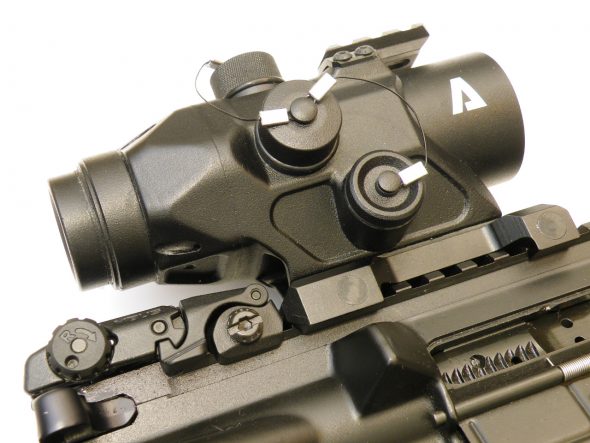



Good overview!
Your comments on the chevron reticle are right on. I see very few people with experience and options choosing them. For the most part, my observation is that the folks choosing chevron reticles like that either do so because that’s what they were trained on (via the .mil ACOG) or they want what the .mil uses.
A crosshair is better for precision, and a horseshoe style would be more favorable for speed.
Everyday,
Trijicon uses the chevron optic. It is a superior reticle to the target obscuring horseshoe. The horseshoe reticle IS NOT better for “speed” unless one is engaging targets at 15m or less. Then again, the reticle of choice is what works best for any given shooter. Not what some blowhard claims is the “best”.
You “know-it–all” types are a joke.
Know it all you say? Your second sentence reads like a fact when it is an opinion. Your third sentence reads like it’s a fact rather than opinion.
Pot Calling Kettle Black.
Either I wasn’t clear, or you misread what I was getting at.
I would never tell someone what is “best” for them, I’m generally pretty clear that my preferences are mine. Either way, have a nice night.
“Forgiving eyebox”. What the hell is THAT ?
The power source ? Not an AA. Not a AAA. Not a 2032. Not even a 123. Some oddball battery that you “found” in a grocery store (in moslem Turkey ?).
Any shooter wasting their money on ANOTHER foreign piece of crap, deserves this garbage optic. But hey, it is (allegedly) cheap. All that matters to moronic Amerikans today.
I would love it to have AA or CR123 illumination. I noted the odd choice. Care to post a picture of your elite rifle setup, playboy bunny wife, Corvette, and million dollar home while you lecture everyone?
It’s important to review everything we can get our hands on to help the consumer make an informed decision. I have owned some nice glass, but the majority of shooters won’t pony up for that kind of gear, especially new shooters. Some of them don’t make much and or have other priorities. I review middle of the road products often to help a larger swath of shooters.
If your going to make recommendations here, please break it down from experience with a product or even educated observations on why you feel your opinion is warranted. These would be better options than sounding like fell off the S.S. Stormfront.
From the guy who has never used or even looked through one. The CR2 battery is compact small, and has great battery life. The battery can’t be that much of an “oddball” since he found one at the LOCAL (NOT Turkey) grocery store. You can also find CR2 batteries on this thing called the internet.
I found more cr2s at best buy and other grocery stores. They fit into the same tubes that a cr123 does in case anyone is wondering.
Is the BDC calibrated for M193 or M855, and from a 20″ or 16″ barrel?
IIRC its calibrated for a 14.5-16 inch gun. Dont know the load but I will swe if the Atibal can let us know.
Not here to dispute anything. I am purchasing the ATibal MROC because I want a reliable optic with good glass that does not cost 800 to 1200. To acheive similar performance
Anymore specifics on the BDC calibration? I would guess M855 from 16″ or “55gr at 3000fps” as that’s rather middle of the rainbows.
do you have more information on getting a zero at 25m using the 400m march. will it work with other brands of optic? what about 2.5x pr 5x magnification? I never heard of this zeroing method.